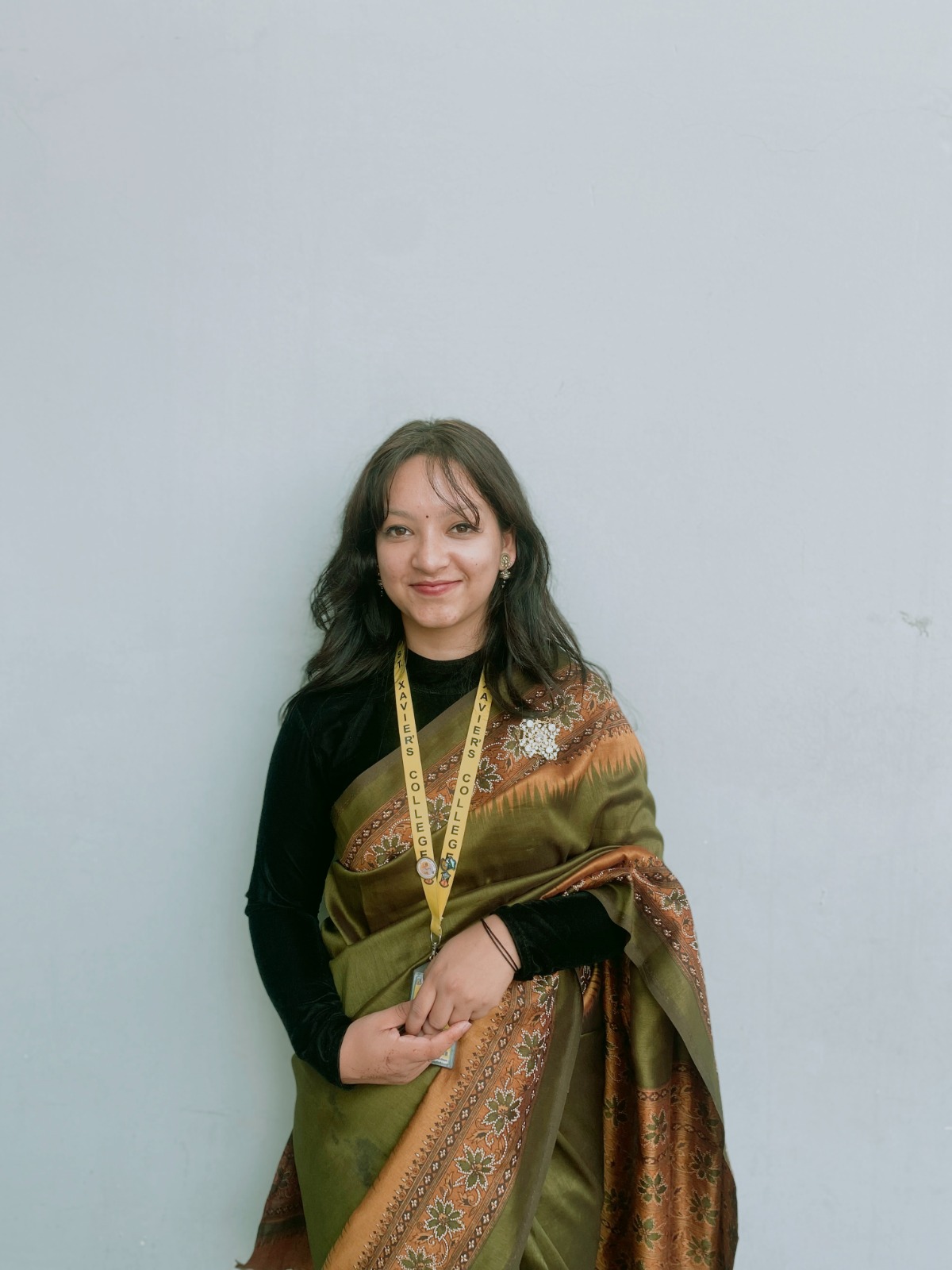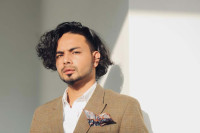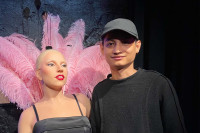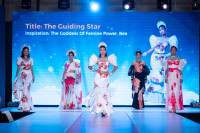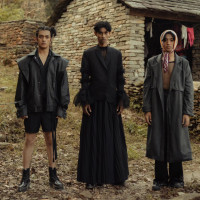Fashion
The Nepali hand behind global feather couture
Sujan Gurung, a Paris-based artisan, shares how he went from studying hospitality in Pokhara to creating intricate featherwork for global fashion houses and celebrities.
Aarya Chand
Sujan Gurung is an artisan based in Paris who specialises in the rare craft of featherwork. He combines traditional techniques with modern fashion. Trained in France, he now leads a studio, Maison RD atelier.
Celebrities like Nicole Kidman, Lily Collins, Monica Bellucci, Laetitia Casta, and the Princess of Thailand have worn his feather designs. He also teaches featherwork in France through a government-supported programme (GRETA CDMA).
In this conversation with the Post’s Aarya Chand, Gurung shares his journey into featherwork, challenges in the craft and plans to connect Nepal with global fashion.
How did your path shift from hospitality studies in Nepal to becoming a feather artisan and professor in Paris?
I began studying hotel management at the National Tourism and Hotel Management College in Pokhara. Hoping to pursue my career abroad, I moved to Lyon, France, with a friend, drawn by its reputation for gastronomy. There, I studied International Hotel Management at the Swiss Hospitality Group School. We moved to Paris for an internship a few months later, but the Covid pandemic disrupted everything. As I neared the end of my first year course, I began questioning my future in hospitality.
While working in a Paris restaurant post-lockdown, I met Dominique, a feather artisan. Curious about his work, I asked him many questions, so he told me to visit his atelier (studio). There, I was fascinated by the artistic and sustainable possibilities of feathers. My lifelong love for animals made me dive deeper, researching how feathers are ethically sourced and used in sustainable, artistic ways. That research further deepened my interest.
Seeing my passion, Dominique encouraged me to pursue a two-year diploma in featherwork at Lycée Octave Feuillet—the only school in France offering this course. While working in an atelier, I studied the art and its applications in haute couture and design.
After graduation, I continued working in the atelier, eventually taking it over when Dominique retired. Since November 2024, I’ve also taught featherwork at the same school through a government-backed adult education programme (GRETA CDMA), alongside my former professor.
What was it like teaching feather work?
Teaching feather work was a new but natural experience. It’s rewarding to pass on practical skills in a rare craft in France. I focus on hands-on techniques and explain important background knowledge, like bird types, feather types, their sources, structure, and usage rules, so students understand both the craft and its materials.
In today’s world, where sustainability and cruelty-free practices are becoming more important, how does your work adapt to those concerns?
There are generally two ways feathers are sourced. One is ethical—collecting them during birds’ natural moulting cycles or using by-products from the food industry, which avoids unnecessary harm. The other involves cruel practices like live plucking, keeping birds in poor conditions, or killing them solely for their feathers. As awareness around sustainability and animal welfare grows, I believe it’s important to be transparent about how we source our materials.
Our workshop has been running for nearly 150 years, and sustainability has always been an important part of our work. We primarily use ostrich feathers, importing 150 to 200 kilos annually from South Africa. These ostriches are not raised for meat but specifically for feathers, as feather quality is better in birds aged 4 to 18. Feathers are collected during their natural moulting cycle—only the white male feathers are trimmed in June or July, leaving a few inches on the skin to allow regrowth. Proper care, including diet and environment, ensures the feathers remain in good condition. We also choose suppliers carefully, maintaining long-term relationships with those who follow ethical practices.
For other types of feathers: rooster, goose, duck, turkey— we only use what comes as by-products of the food industry. Instead of letting them go to waste, we give them new purpose through our craft. While not every feather can be labeled cruelty-free in the strictest sense, we focus on using materials responsibly and transparently within this traditional craft.
Can you walk us through the process of creating a feather costume, and how does it begin?
We don’t create our own designs—major fashion houses like Chanel, Dior, or Valentino approach us with theirs. We first meet to review the designs and preselect feathers based on texture, volume, and visual effect. After a second meeting, they bring colour samples and choose from our selections. Once finalised, we begin dyeing and colouring the feathers. They give us an unfinished base, like a jacket, on which we apply feathers by sewing or embroidery.
Some items arrive in fragile, finished states, so handling must be precise. Our work appears in cabaret shows, films, fashion weeks, and luxury window displays that change annually. In Paris, feathers are seen as a high-end, creative material, and independent ateliers like ours are rare, so precision and collaboration are key.
What was it like working for Lady Gaga twice?
It was a surprising and rewarding experience. When I first came to Paris, I never imagined working at this level. Over time, opportunities like the Paris Olympics opening ceremony and Coachella came, and I feel fortunate to be part of such projects.
Which piece are you most proud of, and why?
I usually feel my current work is better than previous projects, but one that stands out is from last year. For Hermès window display, we were tasked with covering a real, 3-metre-long horse entirely with feathers.
The deadline was tight, and with the help of five Nepali interns, we completed the task on time. The final result met the expectations. The Hermès director acknowledged our effort during the opening, and that recognition meant a lot to me.
What are you most interested in: feather work or taxidermy?
I’ve loved animals since childhood, watching shows like Animal Planet and Discovery. I have many taxidermy birds and animals, including peacocks and foxes. Taxidermy interests me because it preserves animals in a lifelike state, even though it involves working with deceased animals.
In Nepal, taxidermy isn’t common, but with its diverse wildlife, it could help preserve animals found dead in national parks. Instead of selling them, museums could display these animals for education and conservation.
Have you ever received a project so complex that you doubted you could pull it off?
We don’t refuse projects, but each one brings new challenges. Many big fashion houses want unique feathers, but since the 1960s Washington Convention, some feathers—like bird of paradise tail feathers traditionally used in Nepali crowns—are restricted. For example, last year Yves Saint Laurent ordered a costume with bird of paradise feathers, but we had no stock. To solve this, we chemically treated rooster tail feathers with bleach, ammonia, and vinegar to mimic the look. It was difficult, as the fumes were strong and affected us despite working in shifts. This process required careful handling and creativity to meet project demands within legal limits.
How do you involve Nepali interns in your workshop, and what kind of training do you provide them?
Involving Nepali interns is important because many are highly motivated and see this opportunity as rare and valuable. They learn quickly, and having a shared language makes communication smoother.
The training they receive in my workshop is hands-on and project-based, ranging from sewing and stitching to weaving and glueing feathers. Unlike structured school courses, this allows them to adapt and grow through real tasks. While French artisans often follow a set schedule, which is part of the professional culture here, Nepali interns are generally open to being flexible when needed, especially during tight deadlines. Both bring different strengths to the work environment.
Do you see potential for building a feather supply chain in Nepal?
Yes, I see a strong possibility of it. Nepal is an agricultural country, and many households raise chickens, ducks, or pheasants. From my experience, buying white rooster feathers wholesale costs around 1,500 euros. If we invest the same amount in Nepal and create a local sourcing system—perhaps by hiring someone to collect feathers monthly from households instead of letting them go to waste—we could gather a few kilos from one community alone.
China is already sourcing from Vietnam and dominating the market, which drives up global prices. Nepal also has growing Kalij pheasant farms, and their feathers have real value in the feather industry. I’ve started researching this on recent visits to Nepal. It could benefit both Nepali farmers and ateliers in France by reducing dependency on existing suppliers. With further research and coordination, including government cooperation, this idea could create sustainable, mutual growth.
How does artisan work in France differ from Nepal, and what advice do you have for young Nepalis wanting to pursue creative careers?
In France, I’ve seen how highly manual skills are valued—whether it’s embroidery, jewellery, or feather work. Artisans are respected and fairly paid, and their work is taken seriously. Unfortunately, in Nepal, traditional crafts are still linked to caste, affecting how artisans are treated. What also stands out here is the community support system—competitions, grants, and events help young talents emerge and grow, something Nepal still lacks.
To young Nepalis wanting to pursue creative careers, especially abroad: focus on what you’re passionate about, not what others say. Your idea should be different—think beyond the usual. If you believe in your skills and keep going, you’ll grow—maybe not instantly, but eventually.
What are you currently working on? Any new projects?
We’re currently working with a major historic amusement park in France and contributing to Dior’s farewell event in Rome for Maria Grazia Chiuri. Upcoming projects include preparations for the June and July Fashion Weeks (ready-to-wear collections).
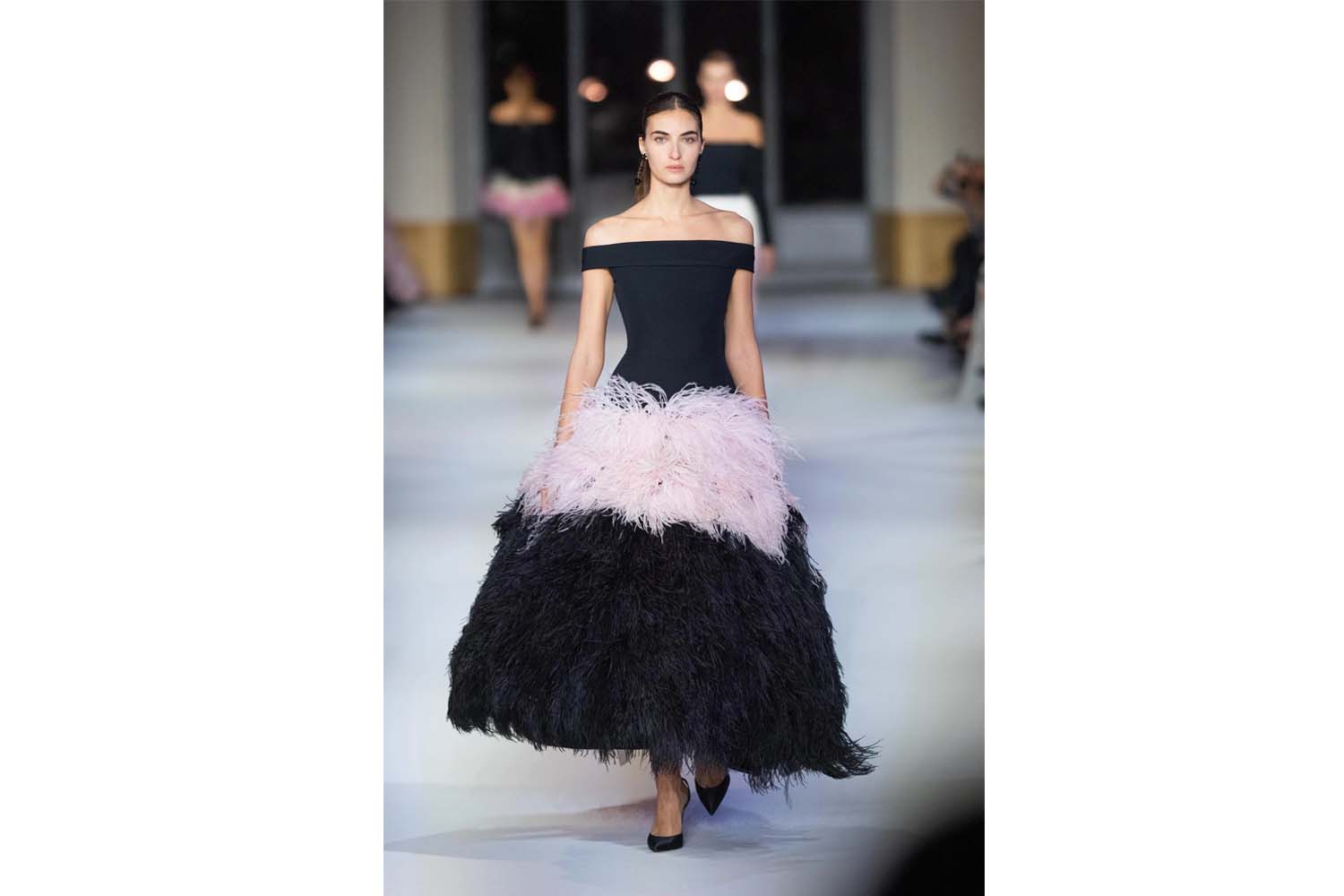




 17.12°C Kathmandu
17.12°C Kathmandu